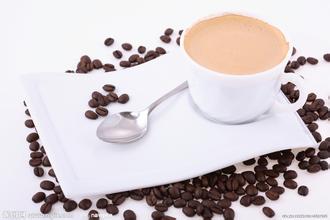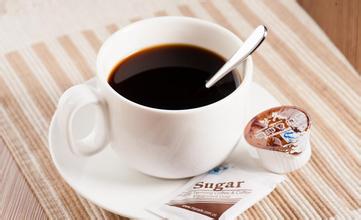Aromatic and rich Ethiopian coffee flavor Taste Manor Features of producing area Introduction Fine coffee beans
Ethiopian coffee beans grow in close to the natural environment, after years of planting under the same growth conditions, Ethiopian coffee beans have gradually adapted to the environment here. More than 60% of coffee beans are grown in forests or semi-forests.
Large-scale coffee-growing villages account for about 35% of the country's total coffee production. These coffee farms, which use a multi-tier coffee planting system, are carefully cared for. Coffee farmers do not use chemical fertilizers, but use fallen leaves and animal and plant debris to increase soil nutrition. In addition to coffee, farmers also frequently grow non-coffee crops. Even manor coffee (coffee produced by state-owned farms), which accounts for 5% of the country's total coffee production, shows the characteristics of forest coffee production.
Located in the most advantaged natural conditions, Ethiopia produces unique high-quality coffee every year. Ethiopia's coffee growing cycle brings the joy of harvest to the country every year. Beautiful white coffee flowers will bloom and bear fruit every year from March to April. Only the reddest and ripe fruits are selected as coffee ingredients between September and about December. The export of new coffee begins in November or December every year.
A brief introduction to the flavor of coffee
Ethiopia has a unique flavor that is different from other flavors and provides customers all over the world with a wide range of taste choices.
In the highlands of southwestern Ethiopia, the Kaffa, Sheka, Gera, Limu and Yayu Senri coffee ecosystems are considered the hometown of Arabica coffee. These forest ecosystems also have a variety of medicinal plants, wildlife and endangered species. Ethiopia's coffee ceremony began when the hostess laid a 2mur3-square-meter floor with a local grass, followed by a small stove for roasting coffee beans and a small table for coffee utensils.
Then there is the washing of coffee beans. First take a bowl of light green coffee beans, wash them in a small basket, just like we wash rice, wash them, take them out and spread them flat on a slightly concave iron plate, then put the iron plate on a small stove fueled by wood or charcoal and start baking. During the baking process, the hostess fiddled with a curved iron bar from time to time. As the temperature increased, the color of the coffee beans changed from light green to golden yellow, and the evaporated coffee beans began to crack and give off a faint fragrance, just as we usually smell in cafes, but much lighter. After roasting, the coffee beans turn dark brown and the aroma becomes stronger.
After baking, the next step is to crush the coffee beans. The hostess withdrew the iron plate to the outside of the stove, cooled slightly, poured the roasted coffee beans into an iron mortar about 30 centimeters high, similar to our processed traditional Chinese medicine, and hammered the beans into coffee powder with an iron pestle. This action is not as simple as it seems. One hand should be held on the iron mortar below, and the other hand should be raised high, because only by holding it high can one be able to do so. To force the iron pestle accurately into the small mouth of the iron mortar, inexperienced people will only hit their own hands. I have also asked curiously, why not grind coffee in an iron mill or a coffee machine? The host told me that if grinding with a machine, the high-speed friction between coffee beans and metal brings a lot of impurities on the iron, which will affect the pure flavor of the coffee after processing.
After the coffee powder is made, the hostess carries the clay plate containing the coffee powder and sends it to the guests attending the ceremony in turn, so that everyone can smell the incense. Next, pour the Chung-ho coffee powder into a clay high-necked coffee pot, add water and boil it on a charcoal stove. on the high neck of the coffee pot, there is a special cork shaped like a wooden top played by children, but a bit like a shoddy one. The function of cork is to keep warm, because the local elevation is more than 2500 meters, the boiling temperature of coffee liquid is low, and the kettle is open, which is not conducive to keeping the temperature; second, it is boiling coffee.

Important Notice :
前街咖啡 FrontStreet Coffee has moved to new addredd:
FrontStreet Coffee Address: 315,Donghua East Road,GuangZhou
Tel:020 38364473
- Prev

Rich flavor of Jamaican Blue Mountain Coffee introduction to Jamaican Coffee Origin, characteristics, Culture, Jamaican Coffee
It is necessary to take a closer look at the myth of Blue Mountain Coffee, because the image of the past is often inconsistent with the reality of today. In 1725, Sir Sir Nicholas Lawes brought the first Blue Mountain Coffee species from Martinique to Jamaica and planted them in the St.Andrew area. Today, the producing area of St. Andrew is still the Blue Mountains.
- Next

The unique flavor of Panamanian Rosa Coffee the characteristics of the manor producing area introduce the Panamanian coffee
Panamanian Rosa-Akatilan fruit producing area (Guatemala Acatenango Gesha). In 2007, Guatemala added the eighth coffee producing area, Acatenango Valley (R), which we turned into Akatilan fruit area. In 2007, Anacaf Panama Coffee Association (Coffee Association of Panama) not only promoted SCAA, but also arranged special topics to explain to the international judges during the national competition. In the past, Bana
Related
- Detailed explanation of Jadeite planting Land in Panamanian Jadeite Manor introduction to the grading system of Jadeite competitive bidding, Red bid, Green bid and Rose Summer
- Story of Coffee planting in Brenka region of Costa Rica Stonehenge Manor anaerobic heavy honey treatment of flavor mouth
- What's on the barrel of Blue Mountain Coffee beans?
- Can American coffee also pull flowers? How to use hot American style to pull out a good-looking pattern?
- Can you make a cold extract with coffee beans? What is the right proportion for cold-extracted coffee formula?
- Indonesian PWN Gold Mandrine Coffee Origin Features Flavor How to Chong? Mandolin coffee is American.
- A brief introduction to the flavor characteristics of Brazilian yellow bourbon coffee beans
- What is the effect of different water quality on the flavor of cold-extracted coffee? What kind of water is best for brewing coffee?
- Why do you think of Rose Summer whenever you mention Panamanian coffee?
- Introduction to the characteristics of authentic blue mountain coffee bean producing areas? What is the CIB Coffee Authority in Jamaica?

